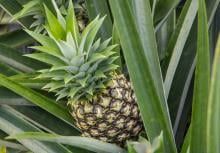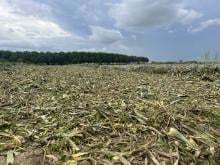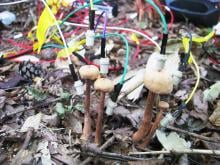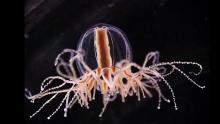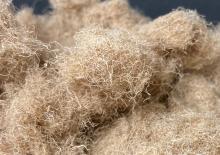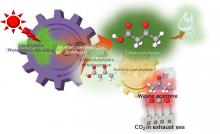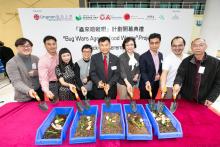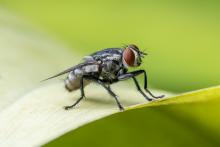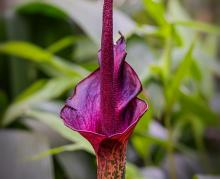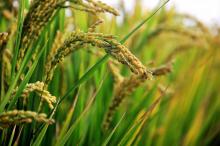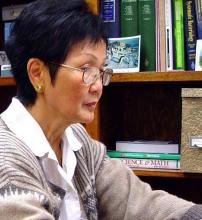Environment
News
07 Jun 2023
Scientists from Thailand, France and Singapore have conducted groundbreaking research using both tiny cellulose nanofibers (CNF) and long pineapple leaf fibers (PALF) to create stronger materials. They added varying amounts of CNF to epoxy and found that 1% CNF greatly increased impact strength. PALF-epoxy composites showed significant flexibility and strength improvements. Combining CNF and PALF resulted in a remarkable increase in impact strength. The findings could revolutionize stronger material development.
26 May 2023
Asia Research News monitors the latest research news in Asia. Some highlights that caught our attention this week are a new sense added to VR, huge solar flares that may have helped spark life, and a volcanic eruption so big that it disrupted satellites.
25 May 2023
A group of researchers from universities in Thailand and Malaysia have collaborated to develop a unique kind of film that is good for the environment and can decompose naturally. They made this film using leftover pineapple stems, which helps reduce the use of harmful plastic films. This new film has the potential to be used as packaging material, contributing to a more sustainable way of doing business and promoting a circular economy.
23 May 2023
Acoustic signals can be effectively used for monitoring glacial runoff and provide a cheaper and more accessible alternative to existing methods.
23 May 2023
With the use of electric vehicles and grid-scale energy storage systems on the rise, the need to explore alternatives to lithium-ion batteries has never been greater. Tohoku University researchers have recently developed a prototype calcium metal rechargeable battery capable of 500 cycles of repeated charge-discharge - the benchmark for practical use. The breakthrough was made thanks to the development of a copper sulfide nanoparticle/carbon composite cathode and a hydride-based electrolyte.
19 May 2023
Asia Research News monitors the latest research news in Asia. Some highlights that caught our attention this week are a surprising antidote candidate for one of the deadliest mushrooms, why a certain species of spider walks like an ant, and the oldest primate embryos grown outside of the womb.
19 May 2023
Mushrooms 🍄get chattier after rainfall 🌧️, Two-organ chip answers fatty liver questions, History maps 🗺️vs future simulations, Restoring vision in blindness. Plus in our blog: Myanmar: Through eyes of leadership. Read all in the latest Editor's Choice.
18 May 2023
Prioritising climate change, ITEX is encouraging inventors to push the boundaries of creativity and innovation to drive new climate technology
11 May 2023
A new group of mitochondrial viruses confined to the arbuscular mycorrhizal fungi Glomeromycotina may represent an ancestral lineage of mitoviruses.
05 May 2023
Asia Research News monitors the latest research news in Asia. Some highlights that caught our attention this week are a natural glue to hold stem cells in place, how cancer manipulates our immune cells, and the answer to Everest’s spooky nighttime noises.
28 Apr 2023
Asia Research News monitors the latest research news in Asia. Some highlights that caught our attention this week are a flu that could potentially jump from dogs to humans, a surgically-implanted chip that can help with serious addiction cravings, and a powerful jet emitted from a supermassive black hole.
28 Apr 2023
Certain types of fungi can communicate with each other via electrical signals. But much remains unknown about how and when they do so. A group of researchers recently headed to the forest to measure the electrical signals of Laccaria bicolor mushrooms, finding that their electrical signals increased following rainfall.
13 Apr 2023
A research group at Osaka Metropolitan University has succeeded in selectively recovering trace rare earth elements in synthetic seawater and environmental water, such as hot spring water, using baker’s yeast with a phosphate group added. The phosphorylated yeast is expected to be utilized as a material for recovering useful metals and removing toxic metals, thereby contributing to the realization of a metal resource-circulating society.
11 Apr 2023
To survive, all organisms must regulate their appetite. Hormones and small proteins called neuropeptides perform this process, stimulating feelings of hunger and fullness. When researchers noted the similarities between GAWamide, a neuropeptide that regulates feeding in the Cladonema jellyfish, and myoinhibitory peptide, a neuropeptide that regulates feeding in fruit flies, they decided to test whether they could exchange the two. Their success in doing so highlights the deep evolutionary origins of feeding regulation.
07 Apr 2023
Cambodia is leading Southeast Asia's transition to cleaner energy. After submitting its long-term strategy for carbon neutrality to the United Nations, it is now currently working with Singapore to become a major exporter of clean energy in the region.
29 Mar 2023
An international team of scientists is helping to reduce carbon emissions into the atmosphere by exploring different natural fibres and blending the natural fibres in plastics to make light-weight and strong green composite materials for the construction and automotive industries.
29 Mar 2023
Osaka Metropolitan University scientists have developed a process using artificial photosynthesis to successfully convert more than 60% of waste acetone into 3-hydroxybutyrate, a material used to manufacture biodegradable plastic. The results were obtained using low-concentration CO2, equivalent to exhaust gas, and powered by light equivalent to sunlight for 24 hours. The researchers expect that this innovative way of producing biodegradable plastic could not only reduce CO2 emissions but also provide a way of reusing laboratory and industrial waste acetone.
28 Mar 2023
Lingnan University (LU) kickstarted their Bug Wars against Food Waste Project on 27 March in order to both reduce food waste and turn it into a useful asset. The campaign aims to inspire students, faculty members and the whole community to adopt a low-carbon lifestyle, using black soldier flies to convert food waste collected from student hostels and canteens into organic fertiliser for the Lingnan Gardeners Project and plants on the campus, as well as quality feed for campus animals. Staff, students and the elderly are signing up as low-carbon ambassadors to develop and apply innovative ideas to resolve community issues and promote a more sustainable lifestyle.
24 Mar 2023
Scientists in Singapore converted fruit waste into a solar absorber called Mxene to develop an efficient and sustainable water desalination process.
20 Mar 2023
Scientists from Alliance University, Bangalore, Birla Institute of Technology Mesra, Inha University, Hanyang University, South Korea, and Newcastle University in Singapore have developed a new and straightforward approach to turn used COVID-19 facemasks into potential absorbent materials that can be employed for carbon capture from atmosphere.
20 Mar 2023
Parasitic infections in salmonid fish can increase or decrease their vulnerability to angling, depending on their body condition.
19 Mar 2023
An international interdisciplinary team of researchers hailed from India, Malaysia, Singapore and Thailand has successfully developed a method of using chitosan from terrestrial insects to manufacture eco‐friendly polymer composite parts using the 3D printing method.
18 Mar 2023
Scientists restore impaired kidney for the first time, How fibre composite fails when wet, Cleaner fish recognize themselves in pictures 🖼️🐟& The source of black carbon in the sea. Read all in the latest Editor's Choice. Plus our magazine Asia Research News 2023 is out now 🎉!
16 Mar 2023
Annual innovation event brings together global innovators, entrepreneurs, researchers and scientists, and experts from various fields and industries to showcase their latest innovations, share ideas, and collaborate with industries to develop better technologies and solutions to shape our future. This is also a platform for innovators to meet potential investors and partners.
10 Mar 2023
Asia Research News monitors the latest research news in Asia. Some highlights that caught our attention this week are how hanging out with friends can keep you healthy, eggs made from male mice, and taking one step closer to a machine that can read our minds.
03 Mar 2023
Insights into their diversity will help to understand and protect them and their natural environment.
03 Mar 2023
Naturally formed iron oxides on the surface of plastic tubes offer an inexpensive and sustainable method to reduce arsenic contamination in crops.
23 Feb 2023
Scientists from Oil Crops Research Institute (OCRI) of Chinese Academy of Agricultural Sciences (CAAS), Anhui Agricultural University (Anhui, China), Newcastle University in Singapore, and Huizhou Comvikin Biotechnology Co., Ltd (Guangdong, China) have developed a green and efficient approach to synthesize highly liposoluble and antioxidant L-ascorbyl esters by immobilized lipases.
17 Feb 2023
Tree rings forecast extreme weather in central Asia, Squid 🦑and chemistry make versatile hydrogels, James Webb telescope reveals the earliest galaxies & Reducing negative effects of screen time. Read all in the latest Editor's Choice. Plus our latest journalist resource "Experts for Media: Antimicrobial Resistance "🦠.
Events
Sorry, no events coming up for this topic.
Researchers
Sorry, no researchers coming up for this topic.
- « first
- ‹ previous
- 1
- 2
- 3
Giants in history
Tetsuya Theodore Fujita (23 October 1920 – 19 November 1998) was a Japanese-American meteorologist who created the Fujita scale that classifies the strength of tornadoes based on damage to structures and vegetation.
Archana Sharma (16 February 1932 - 14 January 2008) conducted research into plant and human genetics that expanded the understanding of both botany and human health. In relation to botany, she uncovered the means by which asexually-reproducing plants evolve into new species.
Roseli Ocampo-Friedmann (23 November 1937 – 4 September 2005) was a Filipino-American scientist whose research focused on cyanobacteria and microorganisms that inhabit extreme environments.
Edgardo Dizon Gomez (7 November 1938 – 1 December 2019) was a Filipino marine biologist who recognized the need to protect marine resources, especially coral reefs, in the Philippines.
Anna Mani (23 August 1918 – 16 August 2001) was an Indian meteorologist who contributed significantly to the understanding of solar radiation, ozone and wind energy by developing a wide range of measurement tools. One of India’s pioneering female scientists, Mani excelled in the male-dominated area of meteorology and became the Deputy Director-General of the India Meteorological Department.
Võ Quý (1929 – 2017) was a Vietnamese ornithologist who studied the destruction of tropical forests and agricultural lands in Vietnam by Agent Orange, a herbicide used by the U.S. military during the Vietnam War. In addition to planning forest restoration projects, Quý rediscovered the rare eastern sarus crane, an endangered species that had vanished during the war.
Japanese geochemist Katsuko Saruhashi developed the first method and tools for measuring carbon dioxide in seawater



